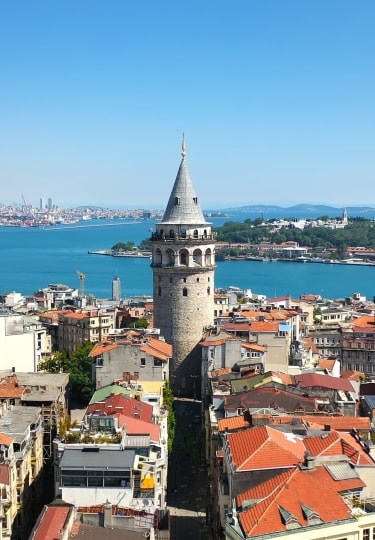Galata, Istanbul is a picturesque neighborhood of the city overlooking the Golden Horn harbor. Its narrow streets are a maze of cozy cafés, art galleries, and inviting shops.
The area is dominated by the Galata Tower, a symbol of the city. The tower’s history reflects the many layers of Istanbul’s past, dating back to when it was called Byzantium and later, Constantinople.
Lose yourself in walking Galata’s cobbles, to discover something new—and something old—around every corner. Then stand on the Galata Bridge, to watch the constant flow of activity on the continents-spanning Bosphorus around which this mythic city grew.
Attractions in Galata
Galata Tower
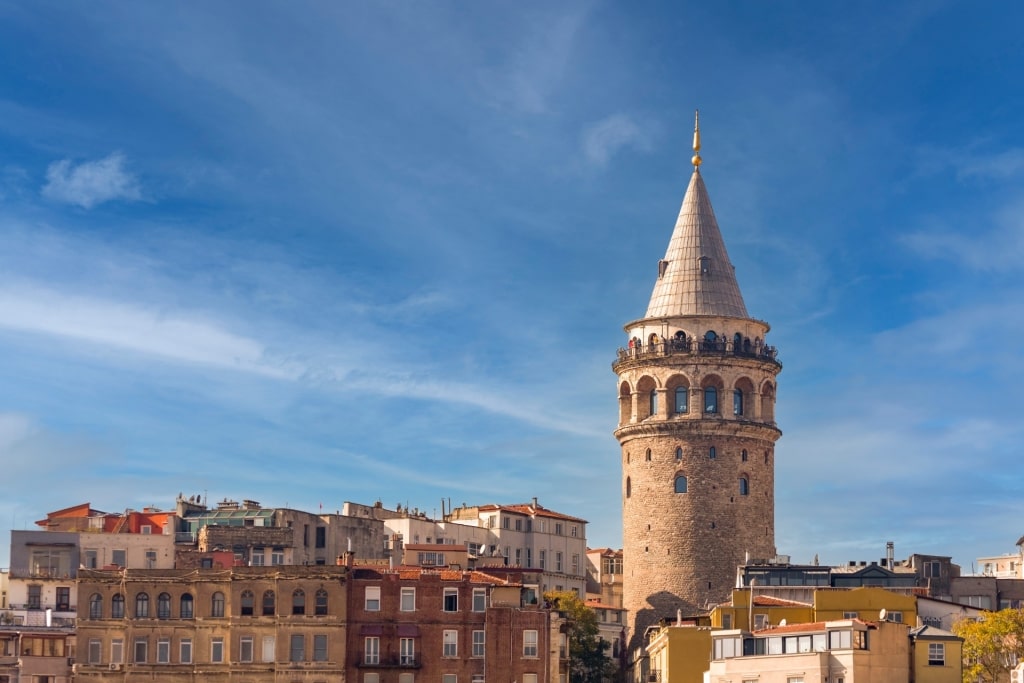
Galata Tower
The Galata Tower stands on a hilltop, making the 360-degree view from the top even more impressive. A last remnant of the Genoese defenses, this handsome 200-foot-high structure dates to 1349.
The top two floors and distinctive conical roof were additions after a fire in 1831. An elevator will take you most of the way up, but there is a final flight of steps.
At the top, you’ll find a restaurant, bar, dance show, and observation gallery. This is one of the best places to visit in Istanbul, as the views of the skyline, the Golden Horn, the Bosphorus, and the Sea of Marmara are unrivaled.
Galata Bridge
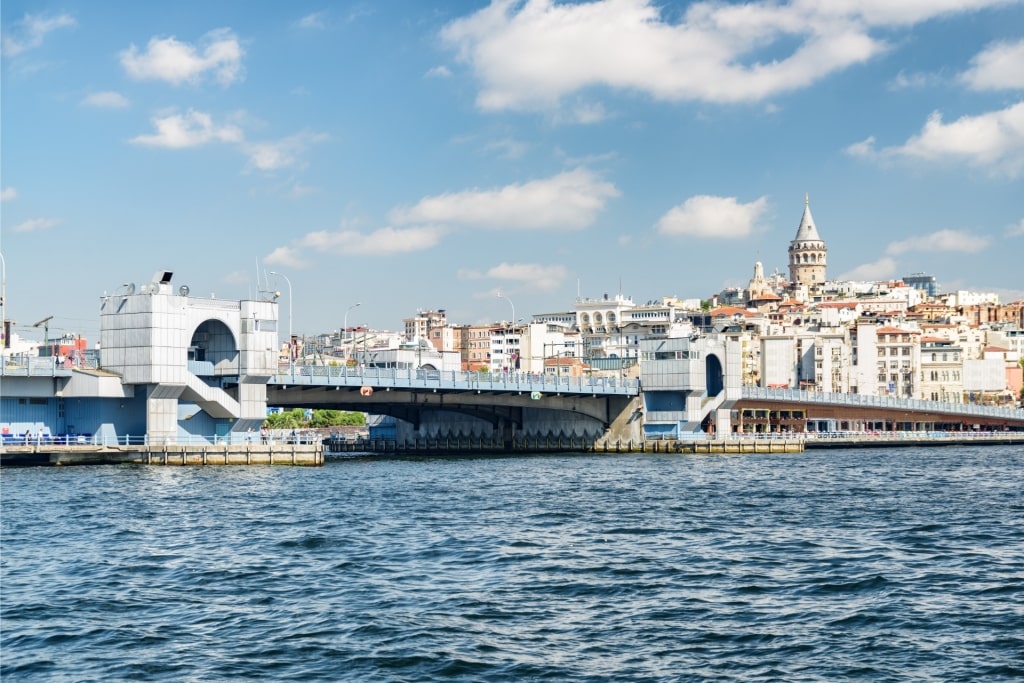
Galata Bridge
The two-deck Galata Bridge crosses the Golden Horn, the inlet that divides the old and new European sides of Istanbul. The lower level is full of seafood restaurants, while the upper is usually lined with anglers.
Thankfully, the restaurants don’t rely on the fish caught from the bridge. The fisherfolk are catching tiny hamsi—anchovy—or istavrit—horse mackerel—to eat at home.
One of the best things to do in Istanbul is to stand on the bridge, where you can take in the skyline and watch the river traffic. Ships, boats, and ferries are busy below, while the call to prayer regularly echoes over the city.
Camondo Stairs
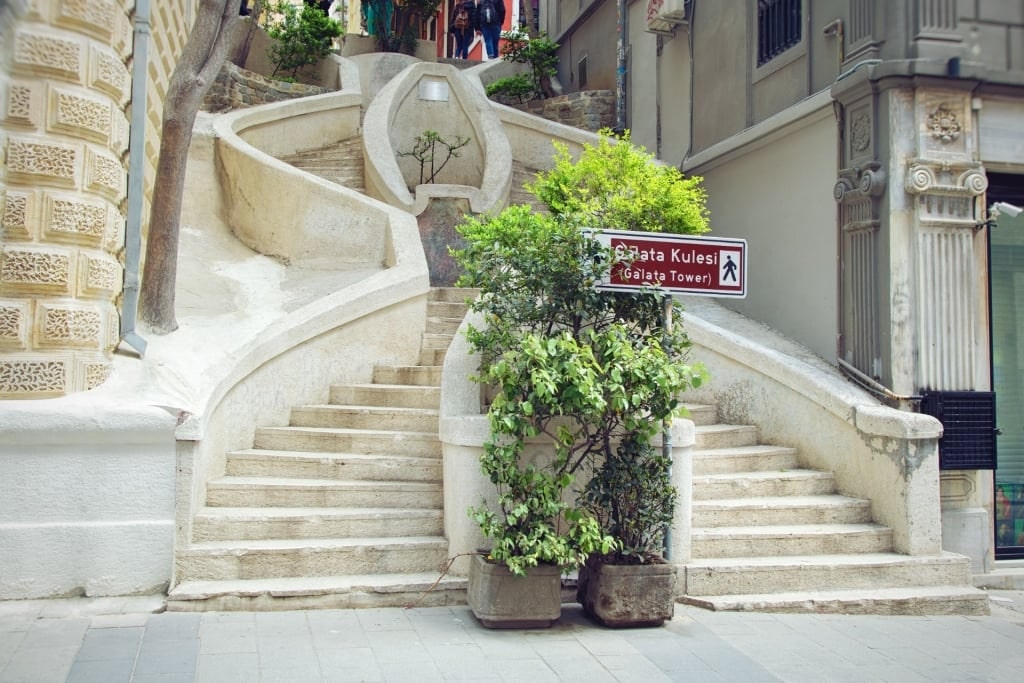
Camondo Stairs
The ornate Camondo Stairs were funded by a wealthy local Jewish family in the 1880s. It’s said they built them to connect the street where they lived to the former Austrian School attended by their grandchildren.
Built in art nouveau style, the curving steps are known as the “Lovers’ Ladder” for the way they split, then reconnect. This flowing design allowed ladies to use them gracefully but it also means children can’t fall down too far.
Henri Cartier-Bresson made a classic set of photos of the stairs in the 1960s. The Camondo family also built two apartment buildings in this Istanbul neighborhood in a similar period style.
Salt Galata
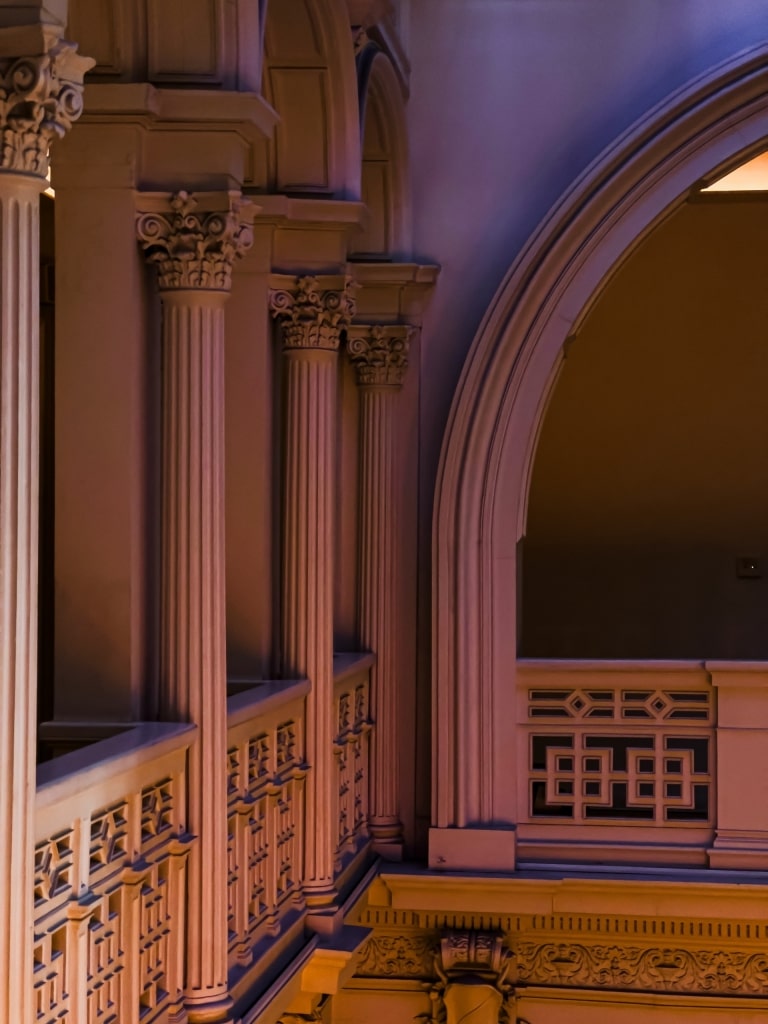
Salt Galata
A 19th-century Ottoman Bank building has been transformed into a contemporary art space in Salt Galata. Its rotating exhibitions, good bookshop, café, and busy library are always an artistic refuge, even more so on rainy days.
Of even greater interest than the free wifi to many visitors is the old bank vault. You can see the massive safes, ledgers, and a display of old banknotes.
The view of the Golden Horn from the higher floors is also worth the visit. If you don’t have time for the line-up at Galata Tower, this is a picturesque alternative.
Istanbul Museum of Modern Art
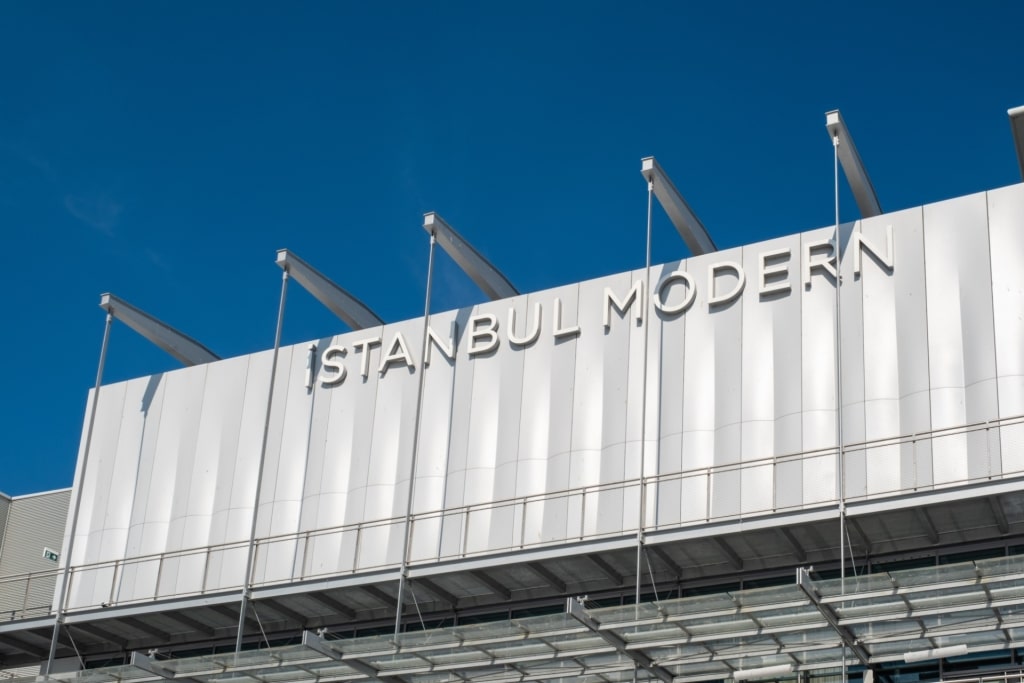
Istanbul Museum of Modern Art
Opened in 2023, the Istanbul Museum of Modern Art is a striking waterfront building by architect Renzo Piano. It focuses on Turkish artists and includes everything from photography and design to architecture and cinema.
Of course, modern and contemporary art remain central to the museum’s vision. There are permanent and visiting exhibitions, and a dedicated photography gallery.
The restaurant has an outdoor terrace to better appreciate the Bosphorus views. The Design Store has a wonderful collection of work by Turkish artists and designers for sale.
Crimean Memorial Church
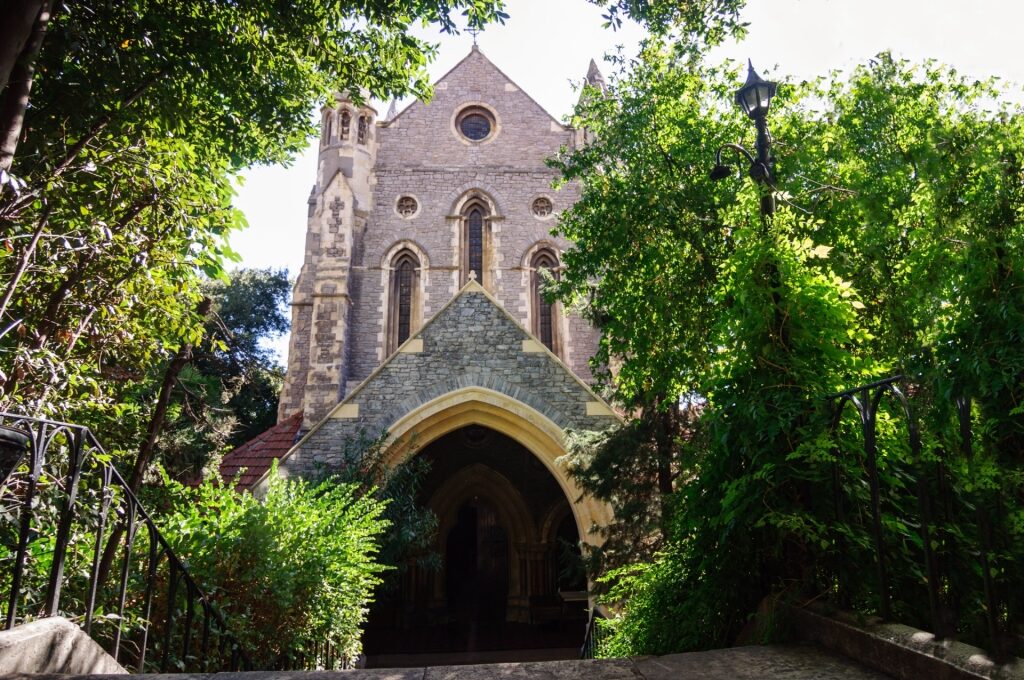
Crimean Memorial Church
This beautiful church was built in 1868 to commemorate the 16,000 British soldiers who died in the Crimean War. Properly known as Christ Church, it is open every day, although you might have to ring the bell for entry.
Fallen into disuse by the 1970s, it was revived by Christian refugees from Kuwait and Syria in the 1990s. It has been lovingly restored, a process that is ongoing.
One highlight is the chancel screen paintings by Scottish artist Mungo McCosh, most of them based on local people. The beautiful stained glass, minaret-like tower, and handmade carpets are also worth seeing.
The Arab Mosque
The Arab Mosque is unique in Istanbul in that it’s been converted from a Catholic church. The original Saint Dominic’s was built in the 14th century on the site of a much older chapel.
After the 1453 conquest of Constantinople by the Ottomans, the building became a mosque. However, it is easy to see the church structure of its original architecture.
The mosque’s name comes from Moors who settled in Galata after being expelled from Spain. Look out for the lovely ablution fountain and the Gothic-style bell tower that’s now a minaret.
Church of St. Anthony of Padua
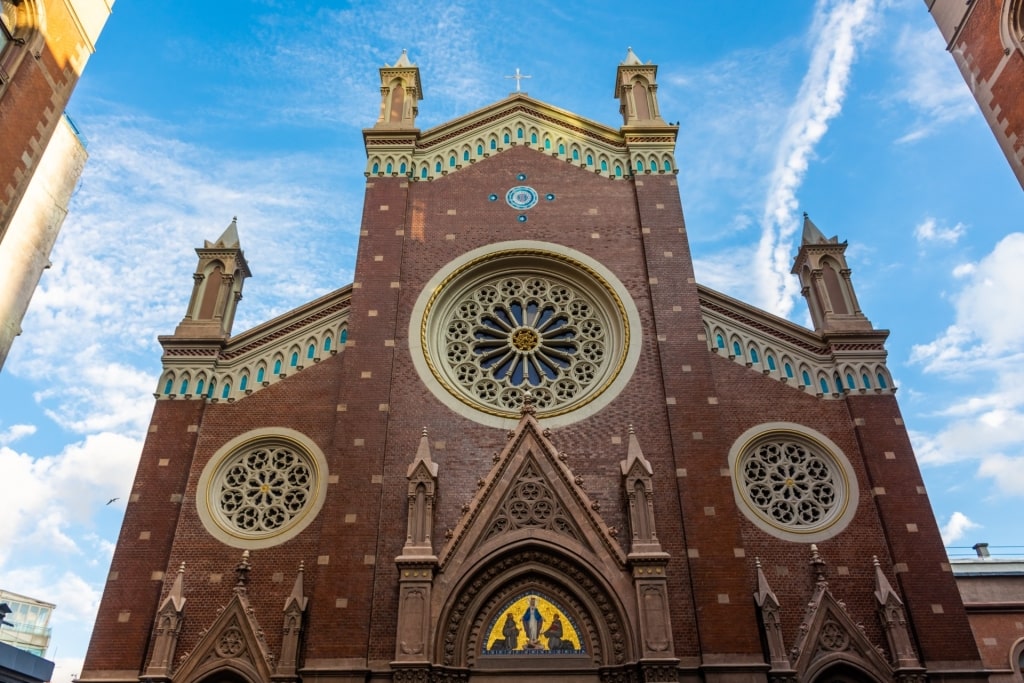
Church of St. Anthony of Padua
St. Anthony of Padua is the largest Roman Catholic church in Istanbul. It was originally built by the small Italian community in 1725 but rebuilt in 1912.
You’ll find it halfway down busy Istiklal Street, where its markedly serene gothic interior is a strong contrast to the world outside. Holy statues and several impressive mosaics are highlights of the rich decor.
With a mass held every day, the church has the energy of an active parish. A statue of Pope John XXIII outside marks his visit in 2003.
Things to Do in Galata, Istanbul
See the Whirling Dervishes
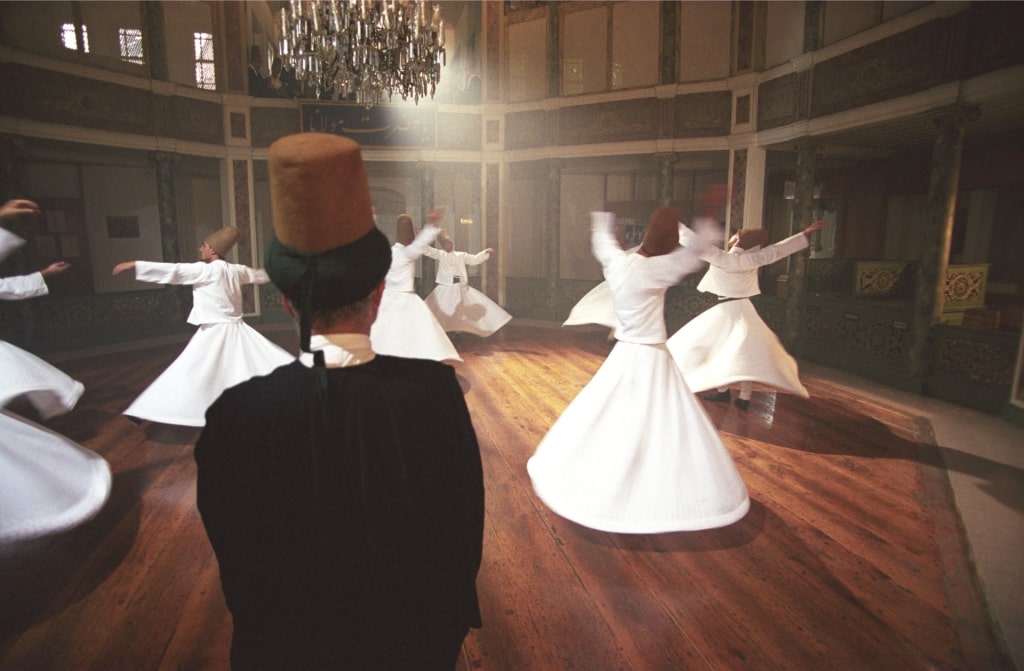
Whirling Dervishes
The Mevlevi Order, followers of a 13th-century Sufi mystic, are better known as the “Whirling Dervishes”. Their mesmerizing dance, spinning in endless cycles, is a hypnotic connection to their faith.
The Galata Mevlevi Lodge was founded in 1491 but the present building dates to 1796. It’s open every day except Monday for you to admire its architecture and history.
There are regular Whirling Dervish ceremonies at the lodge and elsewhere in Istanbul. The best way to see them is to book through a tour company, as spaces are limited.
Discover Istanbul’s Jewish Heritage
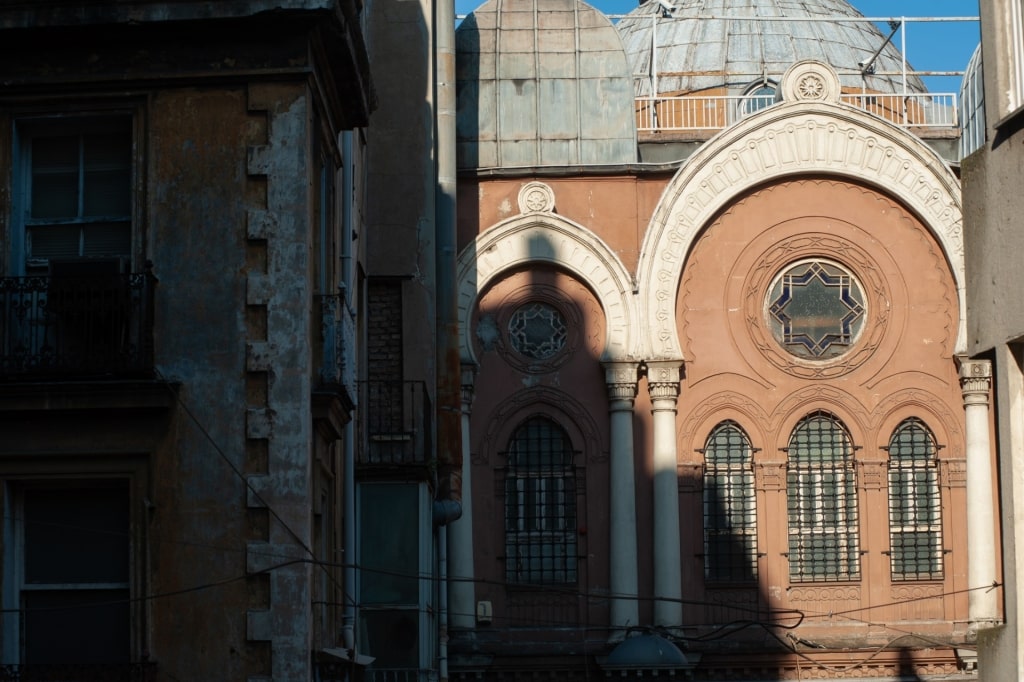
Neve Shalom
The Camondos were only one of many Sephardi Jewish families to settle in Istanbul after fleeing Spain’s 15th century Inquisition. By the late 19th century, there were 100,000 Jews in the city and 44 synagogues.
Among the surviving synagogues is the Neve Shalom, which houses the Museum of Turkish Jews. Near the Galata Tower, it displays photos, clothing, and other fascinating historical artifacts.
Other major synagogues in Istanbul include Ashkenazi Synagogue Karaköy and Ahrida Synagogue Balat. Entry is by appointment, best arranged through a specialist tour company.
Look Out For Fountains
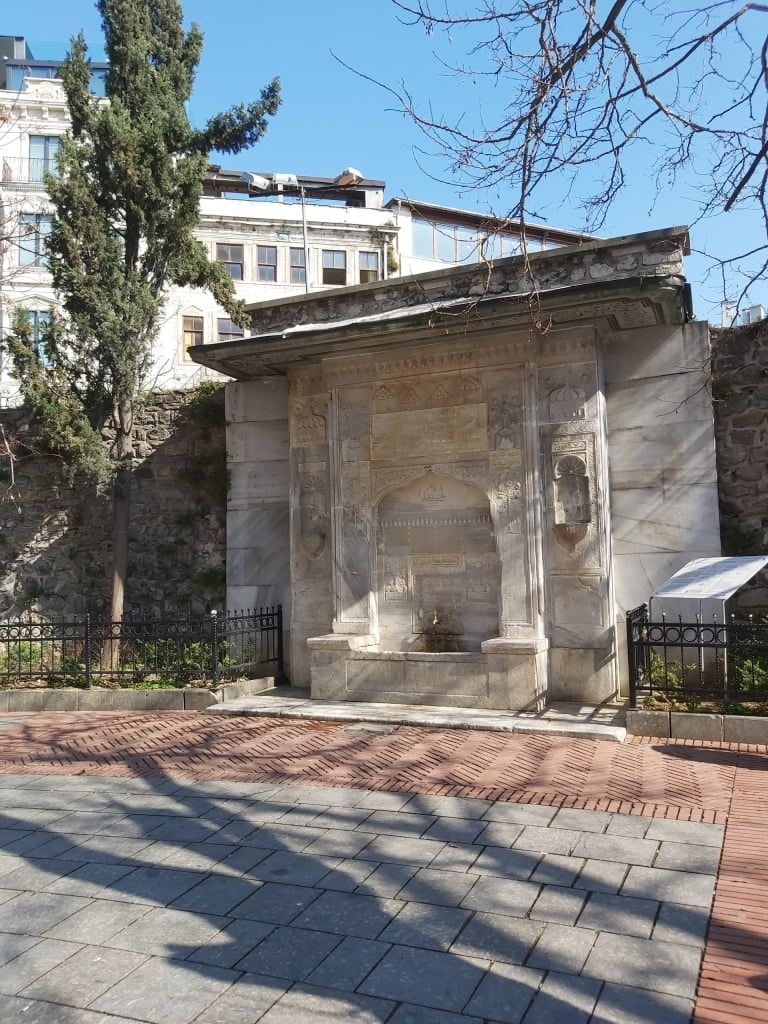
Bereketzade Fountain Photo by Basak on Wikimedia Commons, licensed under CC0 1.0
Galata has several beautiful and historic fountains, which once played a vital role in community life. Many hundreds were built around Istanbul by private benefactors, often the wives of rich businessmen, as acts of charity.
In Galata, the most picturesque is the Bereketzade Fountain near Galata Tower. It dates to 1732 and is notable for its beautifully carved figs, pears, flowers, and cypress trees.
In contrasting style is the Lâleli Çeşme—“Tulip Fountain”—in 1905 art nouveau style. It’s the work of Italian architect Raimondo D’Aronco, whose buildings are found throughout Istanbul.
Go Shopping
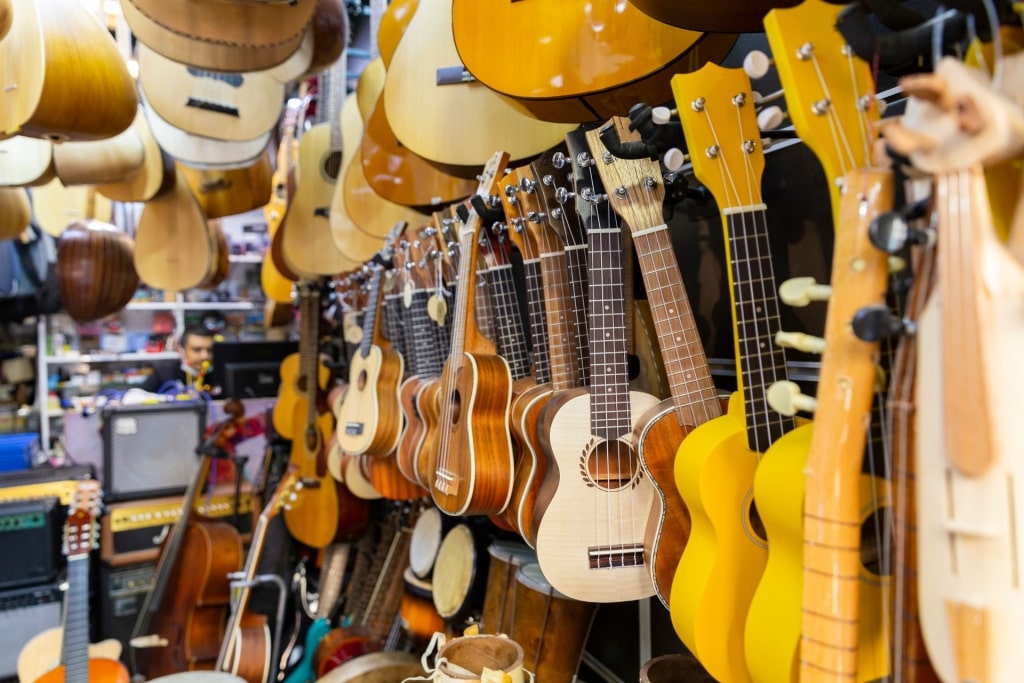
Shop in Galip Dede Street
From the foot of the Galata Tower spreads a web of picturesque streets offering some of Istanbul’s best shopping and eating. It’s also a creative hub, with street murals and painted stairways the most obvious testament to its community of artists.
Browse the shops and galleries to see first-hand the latest in Turkish contemporary art and design. Deep roots in ancient Islamic crafts and Silk Road trade have blossomed anew in fashion boutiques, imaginative ceramics, and vibrant galleries.
On Galip Dede Street, you can find reminders of older times in the specialized shops that cluster together in typical local fashion. The Musical Instruments Market and the Hardware Stores have both traditional and the very latest goods for sale.
Read: Sensational Markets to Visit in Istanbul
Buy a Galatasaray Shirt
One of the most famous soccer clubs in Turkey takes its name—meaning “Galata Palace”—from a high school in Galata. Their distinctive orange and burgundy shirts make a great souvenir and are for sale everywhere.
From that start as a school team in 1905, Galatasaray are now the most successful Turkish club in European competitions, as well as in their National league. Their home matches are major events, held about five miles away from Galata in the new 52,000-seat Rams Park stadium—Turkey’s largest.
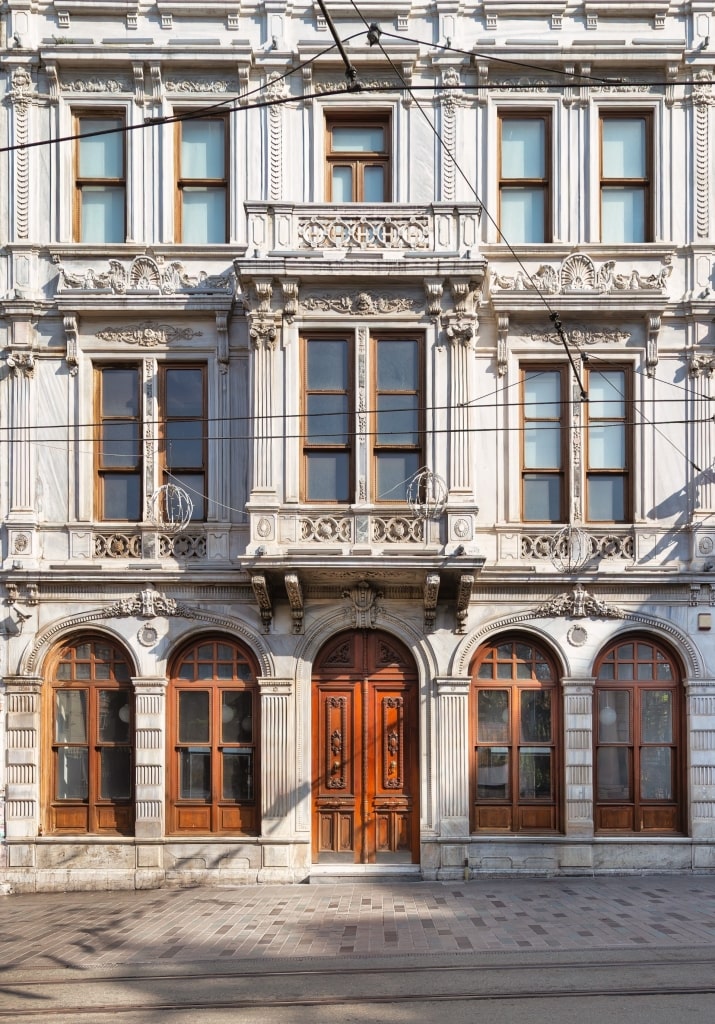
Galatasaray Museum
To learn more, visit the Galatasaray Museum, which sits in a former post office opposite the old school on Istiklal Street. The top floor is dedicated to the football club and the ground floor to the history of the school.
Take the Tünel
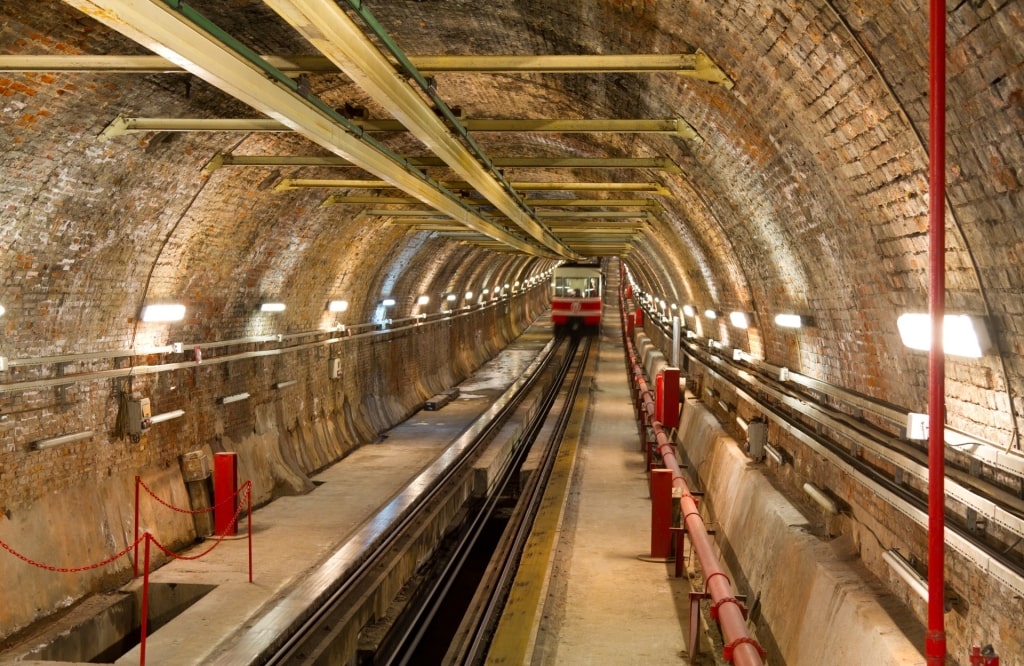
Tünel
In the late 19th century the Galata neighborhood was the financial and commercial heart of Istanbul. However, its steep hill separated the stock exchange and banks near the port from the embassies, hotels, and businesses above.
The solution was the Tünel, a subterranean urban railway line opened in 1875. It’s the world’s second oldest such underground link after London’s famous “Tube”.
The Tünel is only 1,880 feet long and the ride takes about 90 seconds. Its two modern carriages carry 170 passengers each, running less than five minutes apart.
Explore Serdar-ı Ekrem Street
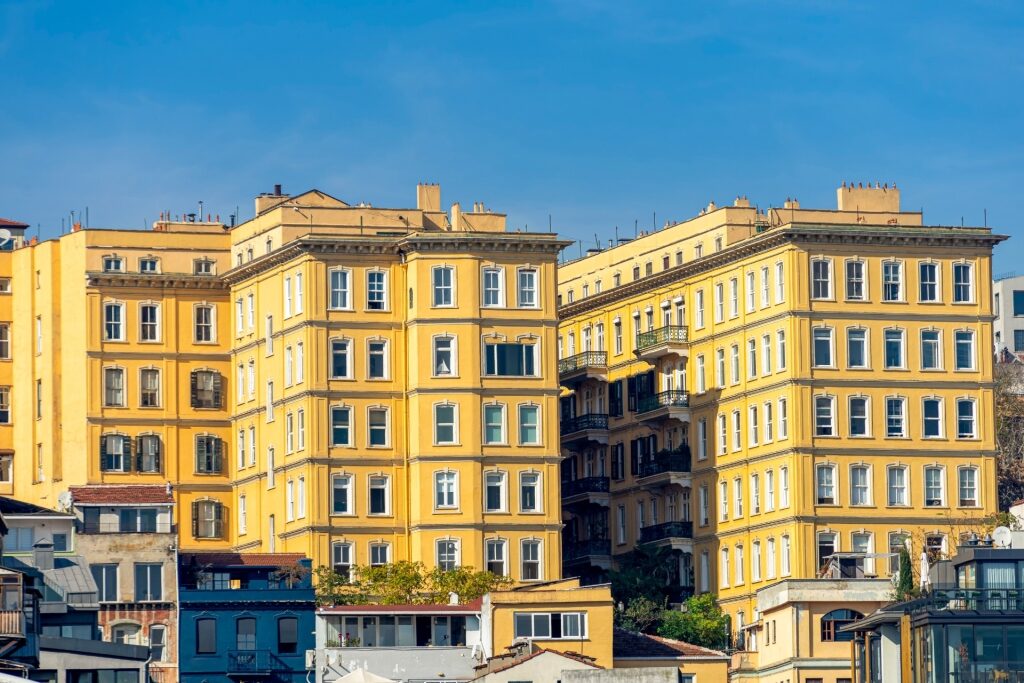
Doğan Apartments
This narrow cobblestone street in Galata is lined with late-19th and early 20th-century buildings. Their ornate facades, wrought-iron balconies, and colorful shutters blend European and Turkish styles.
Major ones to look out for include the Georges Hotel and Adahan Istanbul—an 1874 building that is also now a hotel. The Doğan Apartments, which started life as a Prussian diplomatic mansion, is now the most exclusive address in Istanbul.
The street is full of vintage and antique shops and boutique fashion stores. Other creative outlets to linger in range from artisan crafts and jewellers to specialty coffee shops.
Restaurants
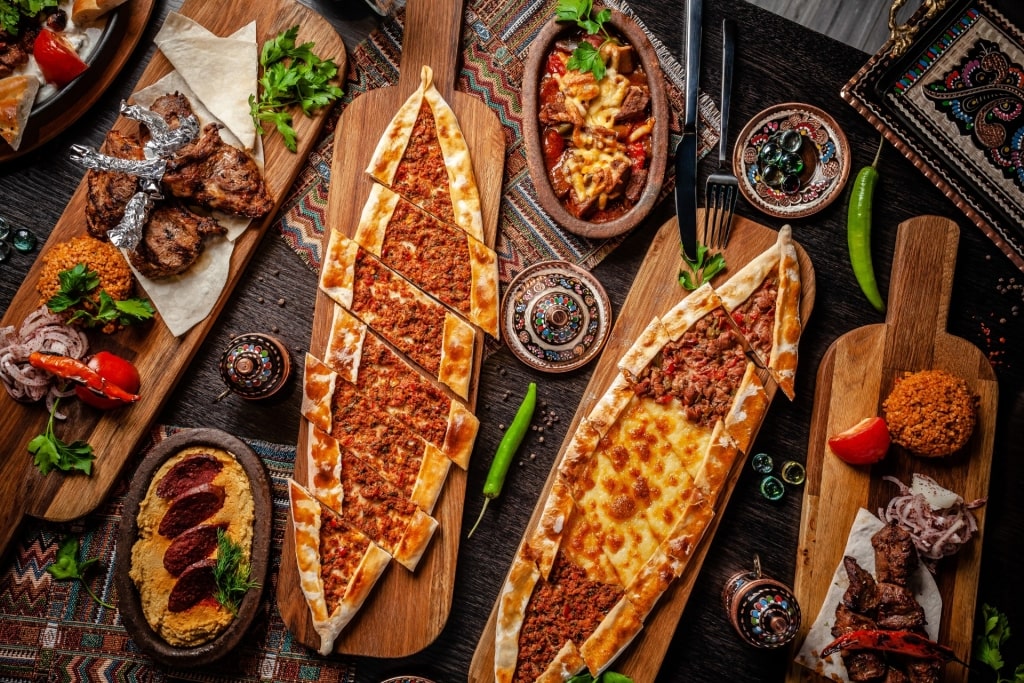
Turkish food
Galata is a foodie’s dream, packed with every kind of restaurant, both Turkish and international. As with everywhere in Istanbul, your biggest problem is always deciding what to eat.
Galip Dede Street is particularly famous for its street food, such as the popular kumpir. This is a baked potato with various fillings, including cheese, corn, sausage, and Russian salad.
However, you might have also heard of Salt Bae, the flamboyant chef who started his career in Galata. He still has several restaurants here, including the busy Salt Bae Burger outlet.
More traditional Turkish can be had at Guney Restaurant, very near Galata Tower. It’s maintained traditional levels of quality and service despite the temptation to exploit tourists.
It might seem odd to visit an Italian restaurant but Il Cortile echoes the Genoese heritage of Galata. It also has a section of the colony’s old defensive walls.
Another must-see is Viyana Kahvesi, the original of the many cheesecakes in the district. The most popular is San Sebastian cheesecake, which comes with a decadent jug of chocolate.
Travel Tips
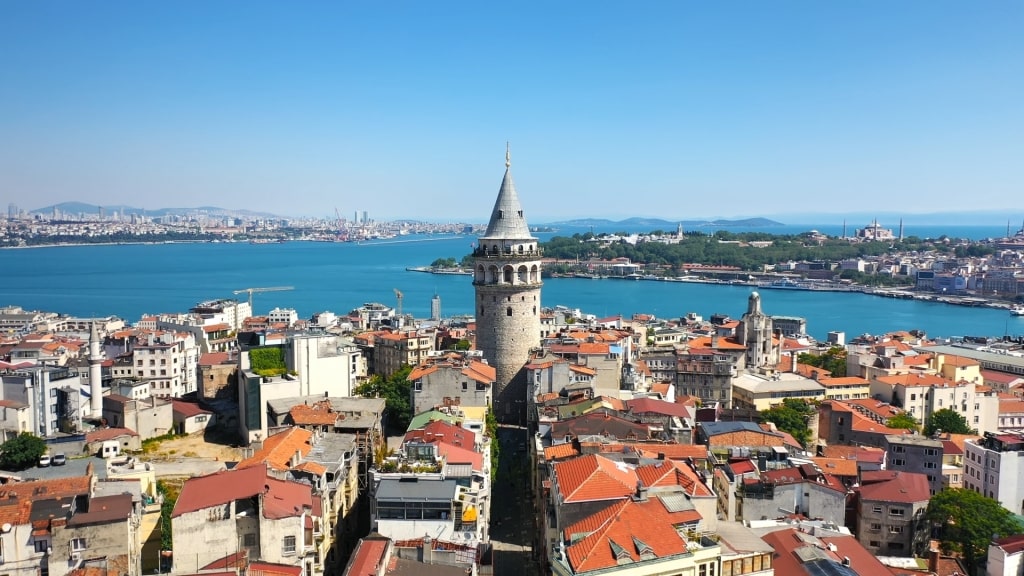
Galata
Understanding the history will help you to appreciate Galata better. Galata is part of the larger Beyoglu district, which also includes the dockside Karaköy—or “Lower Galata”—neighborhood with its ferries to Asia. Connecting the two are the art nouveau Camondo Stairs.
This historic area overlooks Istanbul’s Golden Horn harbor. It was originally given to merchants from the Republic of Genoa in the 13th century, for their help expelling the last of the Crusaders.
This Latin Catholic colony set itself apart from what was then the Orthodox Christian city of Constantinople. They built defensive walls, including the Galata Tower, before both settlements were conquered by the Ottomans in 1453.
By the end of the 19th century, Galata was a major financial center, packed with banks and insurance companies. Always a place apart, it still personifies the European side of Istanbul for western visitors.
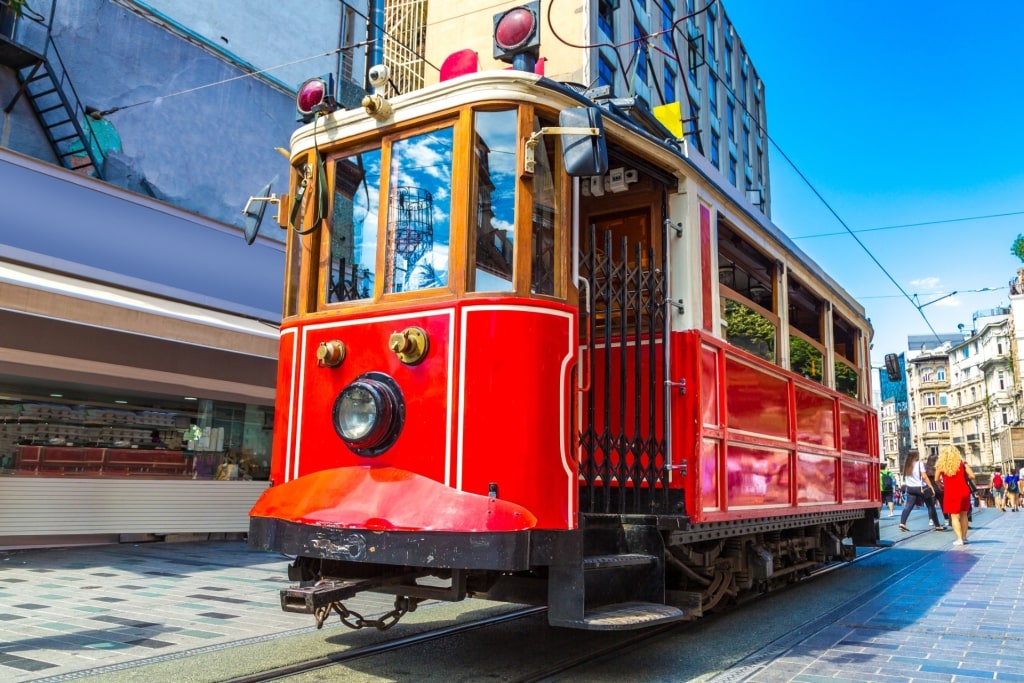
Istiklal
The district is full of cobblestone streets, so make sure you’re wearing comfortable shoes to explore it. From Galata Tower, you walk up shop-lined Galip Dede Street, to Istiklal Avenue, the heart of Istanbul’s European-side shopping.
There is always a long line for Galata Tower but several restaurant terraces offer almost as good a view. Even better, panoramas such as from the roof of the Anemon Hotel include the tower itself.
One downside is that many outside restaurants, and especially roof terraces, are attractive to birds. The yellow-legged and black-headed gulls can be a nuisance.
A scam particular to Galata is wandering shoe-shiners on Galata Bridge “accidentally” dropping a brush. Any shoe cleaning offered in seeming gratitude for returning it will not be free.
Read: Two Days in Istanbul
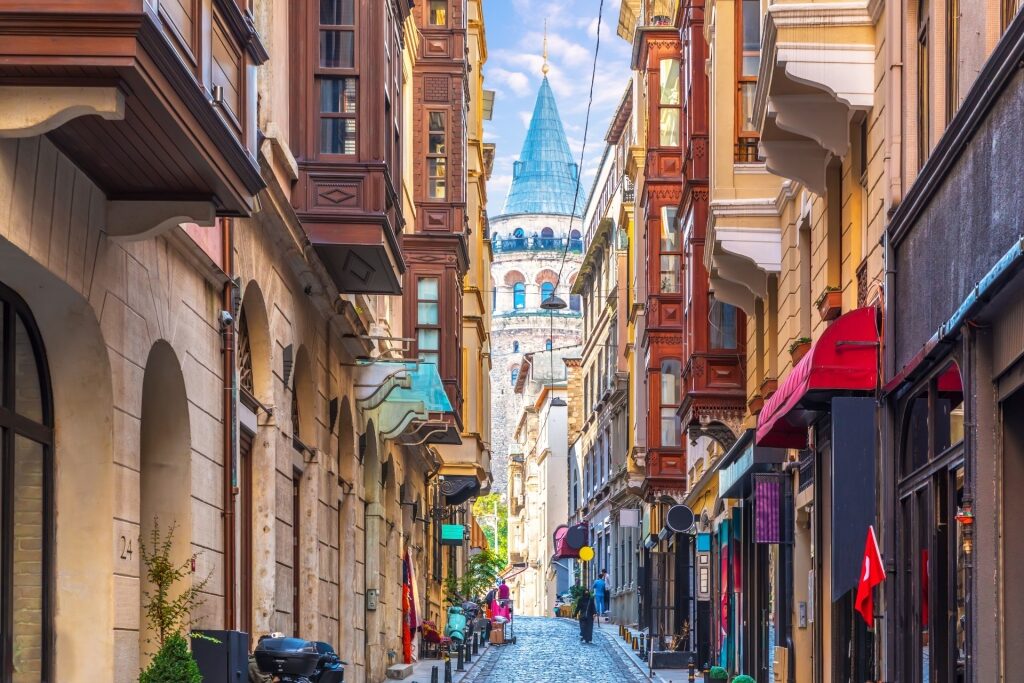
Galata
Are you tempted to explore Galata, Istanbul? Browse Celebrity’s cruises to Istanbul and plan your Turkish adventure.
